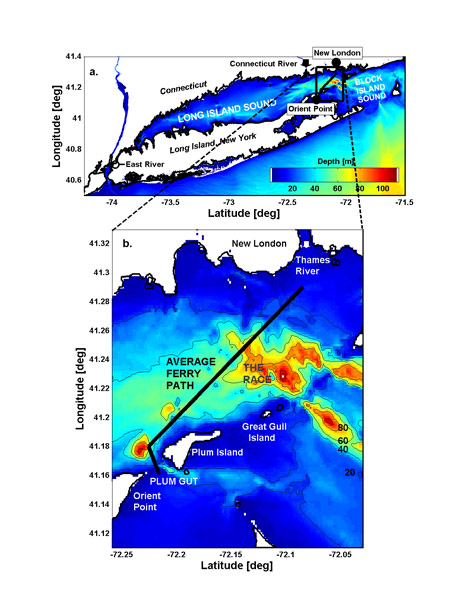Importance of water quality in Long Island Sound
- To preserve and protect these assets, effort is concentrated on maintaining good water quality. This includes managing the impacts of human activities.
Why focus on currents and water property distributions?
How are they investigated?
- Major influences on LIS water quality are
- water circulation such as tidal flow, persistent currents, and eddies
- distributions of water properties like salinity and temperature, and of waterborne materials like chlorophyll from phytoplankton (single-celled microscopic algae)

- Currents and water property distributions in estuaries result from complex processes currently undergoing active research, particularly in physical oceanography, the study of ocean fluid dynamics.
- Two main research techniques to investigate water quality and circulation in estuaries and coastal areas are (a) computer simulations, and (b) collection and analysis of field observations.
Why collect oceanographic observations from a ferry?
- This project is motivated by the limited amount of observations that have been made in LIS, a result of the high expense of operating research vessels.
- In FOSTER-LIS, measurements are collected from a ferry, the MV John H. This is a very cost-effective means to gather field data. The vessel is operated by Cross Sound Ferries, Inc. (CSF), which generously provides the research team access.
- Collecting measurements in ongoing field programs such as this is a high priority because computer simulations must be validated against observations.
- The ferry travels where the dominant exchanges of water from within and outside LIS occur, in eastern LIS between New London, CT and Orient Point, NY. The measurements improve understanding of rates and pathways for water replenishment in LIS.
|
